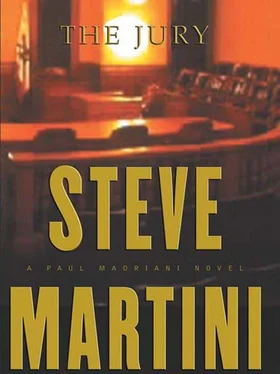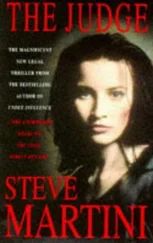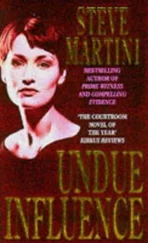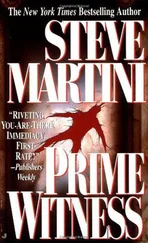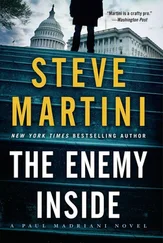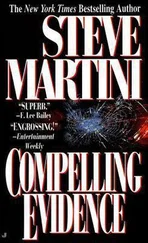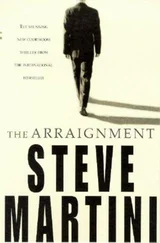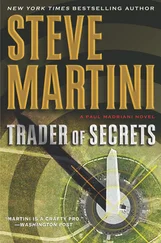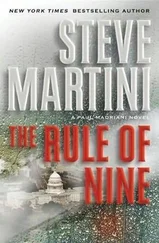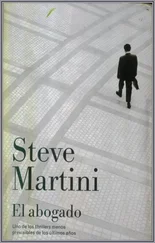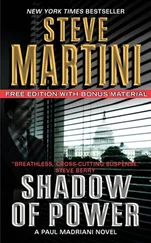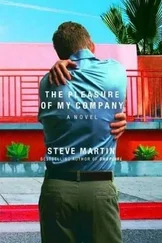Steve Martini - The Jury
Здесь есть возможность читать онлайн «Steve Martini - The Jury» весь текст электронной книги совершенно бесплатно (целиком полную версию без сокращений). В некоторых случаях можно слушать аудио, скачать через торрент в формате fb2 и присутствует краткое содержание. Год выпуска: 0101, Издательство: Penguin Group US, Жанр: Триллер, на английском языке. Описание произведения, (предисловие) а так же отзывы посетителей доступны на портале библиотеки ЛибКат.
- Название:The Jury
- Автор:
- Издательство:Penguin Group US
- Жанр:
- Год:0101
- ISBN:нет данных
- Рейтинг книги:3 / 5. Голосов: 1
-
Избранное:Добавить в избранное
- Отзывы:
-
Ваша оценка:
- 60
- 1
- 2
- 3
- 4
- 5
The Jury: краткое содержание, описание и аннотация
Предлагаем к чтению аннотацию, описание, краткое содержание или предисловие (зависит от того, что написал сам автор книги «The Jury»). Если вы не нашли необходимую информацию о книге — напишите в комментариях, мы постараемся отыскать её.
The Jury — читать онлайн бесплатно полную книгу (весь текст) целиком
Ниже представлен текст книги, разбитый по страницам. Система сохранения места последней прочитанной страницы, позволяет с удобством читать онлайн бесплатно книгу «The Jury», без необходимости каждый раз заново искать на чём Вы остановились. Поставьте закладку, и сможете в любой момент перейти на страницу, на которой закончили чтение.
Интервал:
Закладка:
“What does that mean?”
“You could apply that much tension to the tie before it would fail, stretch or break. And it was thin. It produced a severe cutting edge when tightened. In this case it cut partially into the victim’s jugular vein.”
“Can you be sure that the victim died of asphyxiation? Is it possible that she could have bled to death?”
What the significance of this is I am not sure, but Schwimmer quickly puts it to rest.
“Asphyxiation. Due to ligature strangulation,” he says.
“Wouldn’t she tend to bleed to death if the jugular were cut?”
“If it were severed cleanly, completely, perhaps. But in this case the cable tie merely cut a deep ligature furrow that abraded a small portion of the surface of the vein. The orientation of this furrow was horizontal with just a little upward deviation at the posterior of the neck. There was some bleeding, including soft-tissue hemorrhage and abrasion, just below the ligature furrow. This groove, the ligature furrow, crosses the anterior midline of the neck, the front just below the laryngeal prominence. Here,” he says, “around the Adam’s apple. And fracture of the hyoid bone.”
“In layman’s terms?” says Tannery.
“The voice box was crushed. The breathing passage collapsed. There is no doubt. She died of asphyxia.”
“In nine to eleven minutes?” asks Tannery.
“Approximately.”
“Can you describe for the jury the physiological changes, what the victim would feel or experience as a result of asphyxiation by strangulation?”
“Yes. The pressure in the head would build as a result of constricted blood vessels, and the inability of the brain to obtain oxygen. There would be panic, a good deal of fear. The back of the tongue would be lifted and pulled into the posterior of the throat. This would block the airway. In a few seconds, the tongue would begin to swell. The head would turn a reddish purple. The lips would ultimately become cyanotic. . ”
“What does that mean?”
“They would take on a pale blue to black color. Death would result from a lack of oxygen in the tissues of the brain.”
“How can you be sure this particular case was not suicide or an accident?” asks Tannery.
Schwimmer actually smiles at this. He looks at the D.A. as if perhaps Tannery is joking. “You mean apart from the fact that the body was dismembered after death?” asks Schwimmer.
“Yes. Apart from that. I’m talking about a possible hanging, suicide or accident as the cause of death, leaving aside what happened to the body afterward.”
Tannery is covering his bases, on the long shot that we try to defend on the theory that she killed herself, and Crone merely panicked for fear that he would be blamed, and disposed of the body.
Schwimmer considers for a moment. “Well the ligature marks. The bruising on the neck was not consistent with hanging if that’s what you mean. When a person hangs herself, assuming she could use this thing-this nylon cable tie to do this, you would get a V pattern of bruising on the neck.”
“A V?”
“Yes. The result of gravity on the body, pulling it downward, and sagging of the ligature. Here you have a straight line, a ligature mark-in fact, in places it is so deep as to be an incision. It takes a straight line, almost level all the way around the neck. This is consistent with asphyxia by strangulation from behind.”
“And how do you know it was from behind, Doctor?”
“Because when the body was recovered, the ligature was still tightened around the neck, embedded in the outer flesh. The yoke, where the cable tie is joined together in a continuous loop, was at the midline here.” He reaches around to the back of his neck. “It was notched just slightly above the first cervical vertebra at the posterior midline of the neck.”
“And what did you conclude from this?”
“That the victim died as a result of a criminal agency,” says Schwimmer.
“So the jury can understand, Doctor?”
“She was killed by someone else. ”
“You’re saying this was a homicide? A murder? The intentional killing of another person?”
“That’s correct.”
Tannery turns away from the witness for a moment as if to regroup for the next assault.
“Doctor, would you say that the physical evidence as you observed it, the way the ligature was applied, indicated that some thought and preparation had been given to this act?”
“Objection. Counsel is leading.”
“Sustained. Rephrase the question,” says Coats.
Tannery does so and gets the answer he wants, that some thought and preparation went into the act. Schwimmer has brought some cable ties with him for purposes of demonstration. Tannery has him take several from a bag. One he gives to the judge, who studies it briefly and lays it on the bench. Another is delivered to our counsel table by the bailiff. Two others, with the court’s approval, start filtering through the jury box.
“These are identical to the cable tie used to kill the victim, Kalista Jordan,” says Schwimmer. “I believe they are made by the same manufacturer. They are designed as heavy-duty cable ties, thirty-four-point-eight inches long, three-eighths of an inch wide, made of white industrial nylon. They have a tensile strength of two hundred and fifty pounds.”
One of the male jurors has actually snapped the open end of one of the ties into the yoke and is pulling on the closed loop as if to test its strength. It doesn’t budge.
“In order to apply the tie to the victim in the manner in which I believe was done in this case, it would be necessary first to make a loop by inserting the open end into the yoke.”
Schwimmer demonstrates. The tie is now a large white nylon loop in his hand like a buckled belt, only much thinner, with the tip sticking through the yoke like a tail a couple of inches at one end.
“Why would that be necessary?” asks Tannery.
“If the loop were not started in this fashion, and if the victim were to struggle, it would be very difficult if not impossible for the killer to insert the end into the small opening of the yoke. Like threading a needle,” he says. “Very difficult to do if someone is jostling you, resisting. No, I believe it is clear that the cable tie was prepared in this fashion prior to the attack.”
“And this would indicate some thought and preparation by the killer?” Tannery is getting at the elements of premeditation and deliberation.
“Yes. Also there is evidence that the killer used a tensioning tool for leverage,” says Schwimmer.
“A tensioning tool?”
The coroner reaches into the bag again and comes up with a device that looks like a pistol with a long trigger. He holds it up for the jury and the judge to see, and we all examine this, though we have seen it before.
“This is specifically designed for tightening cable ties. The open end fits in here.” He feeds the open end of the tie into what would be the barrel of the gun until it hits bottom, then works the trigger. The tool grips the tie, and with each pull of the trigger more than two hundred pounds of pressure can be applied to the tie. The physics of leverage.
“Do you think the killer attached a tool like this to the tie used to kill Kalista Jordan. .?”
“Yes.”
“Let me finish the question, Doctor. Do you think the killer used a tool like this, and that he or she did this in preparation for the murder?”
“I do,” says Schwimmer. “We found small impressions on the nylon tie used to kill the victim. These marks are consistent with a tool of this type, which is commonly used and sold with the cable ties.
“Also,” says Schwimmer, “such a tool would give the killer great leverage. The assailant would not have to pull the thin nylon with the hands.”
Читать дальшеИнтервал:
Закладка:
Похожие книги на «The Jury»
Представляем Вашему вниманию похожие книги на «The Jury» списком для выбора. Мы отобрали схожую по названию и смыслу литературу в надежде предоставить читателям больше вариантов отыскать новые, интересные, ещё непрочитанные произведения.
Обсуждение, отзывы о книге «The Jury» и просто собственные мнения читателей. Оставьте ваши комментарии, напишите, что Вы думаете о произведении, его смысле или главных героях. Укажите что конкретно понравилось, а что нет, и почему Вы так считаете.
